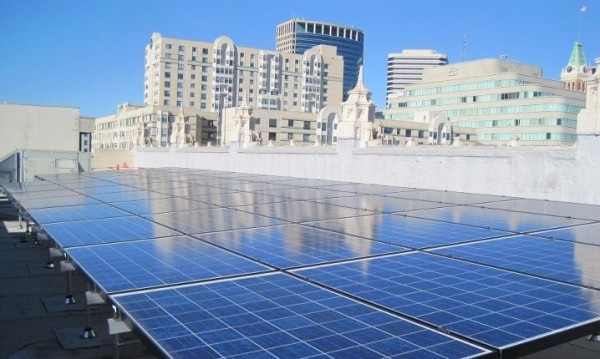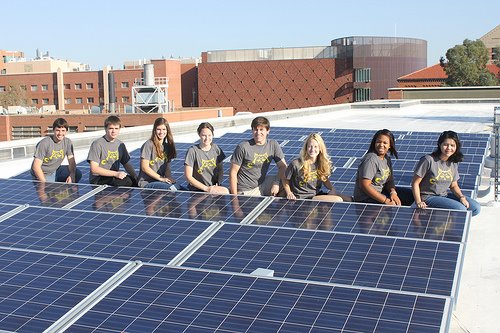Solar Mosaic is on the rise, suggesting again – remember our story about MLP parity? – that the real revolution in renewable energy development won’t come in the technology, but in how it is financed.
Wall Street has helped drive the solar-leasing boom of the last few years – think of Citi’s investments in Sungevity and SunPower. Now Solar Mosaic is embarking on a crowdfunding financing model that could pump huge money into solar development by opening it up to Main Street investors with a soft spot for solar power.

“Even very small fractions of the trillions of dollars in retail investment capital would provide ample dollars for crowdfunding clean energy,” Bloomberg New Energy Finance wrote in a new white paper [PDF] that assessed crowdfunding’s potential in the sector. “One percent of current retail investment in savings accounts, money markets, and U.S. Treasuries would provide more than $90 billion in clean energy crowdfunding.”
Solar Mosaic seems to be gathering the support it needs to test this proposition. At the end of May, the company announced $2.5 million in early-stage funding, led by Spring Ventures. Then last week it nabbed a $2 million SunShot Initiative grant from the Obama administration.
According to the Bloomberg report, Solar Mosaic filed papers in April to offer “Solar Power Notes to the public, with proceeds going to fund solar power projects.” Securities regulations forbid the company from revealing much about the notes, including the possible return they might offer, but Bloomberg pointed to the case of the U.K.-based company Abundance Generation, which expects to reward investors 5 and 9 percent on their invesment.
This sort of model is a shift for Solar Mosaic. It was born on the idea of giving people and opportunity to help grow community solar strictly because that growing community solar provided a social benefit. The promise was to do good and to pay back investors over the course of several years.
But 5 to 9 percent – that’s moving into the realm of competitive return.
The do-good ethic that gave birth to the company could also allow Solar Mosaic to raise money and fund projects without offering as much risk protection, Bloomberg said, although that would have to change if the financing model were to become a serious, big-time competitor for investor cash.
For early investments, added risk “may not be an issue as investors are likely to be motivated as much by environmental and social values behind a project, and frustration with existing financial institutions, as they are with riskless returns,” Bloomberg said, but if crowdfunding is “to expand substantially, it will likely require credit risk and insurance products designed to protect investors.”
Solar Mosaic and other crowdfunding models got a boost earlier this year when Congress and President Obama, in a rare show of bipartisanship these days, passed and signed into law the Jumpstart our Business Startups (JOBS) Act, which, as Bloomberg explains, “allows unaccredited investors to easily make equity investments in small or startup businesses, particularly through crowdfunding.”
Spring Ventures’ Sunil Paul said in a statement that the firm invested in Solar Mosaic “because the opportunity for cleantech investing is no longer mainly in solar manufacturers and hardware,” and “what’s needed are innovations in financing and customer acquisition.”

That’s the same rationale the U.S. Department of Energy cited in announcing the SunShot award for Solar Mosaic. SunShot’s broad goal is to drive the installed cost of solar below $1 per watt by 2020. The program is funding technological initiatives, but Secretary Steven Chu noted that around a quarter of the price of solar installations is eaten up by “soft costs” – financing and customer acquisition.
“Financing is a major part of getting the cost of solar down. There is a huge difference between borrowing at 12% vs. 10% vs. 8%,” Secretary Chu said.